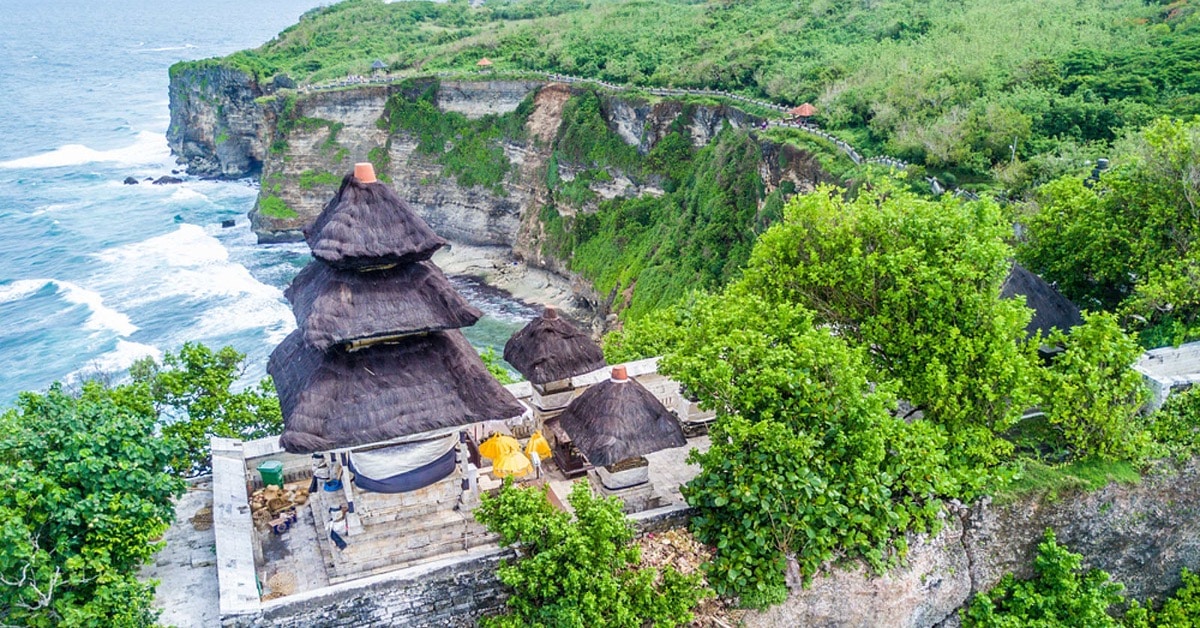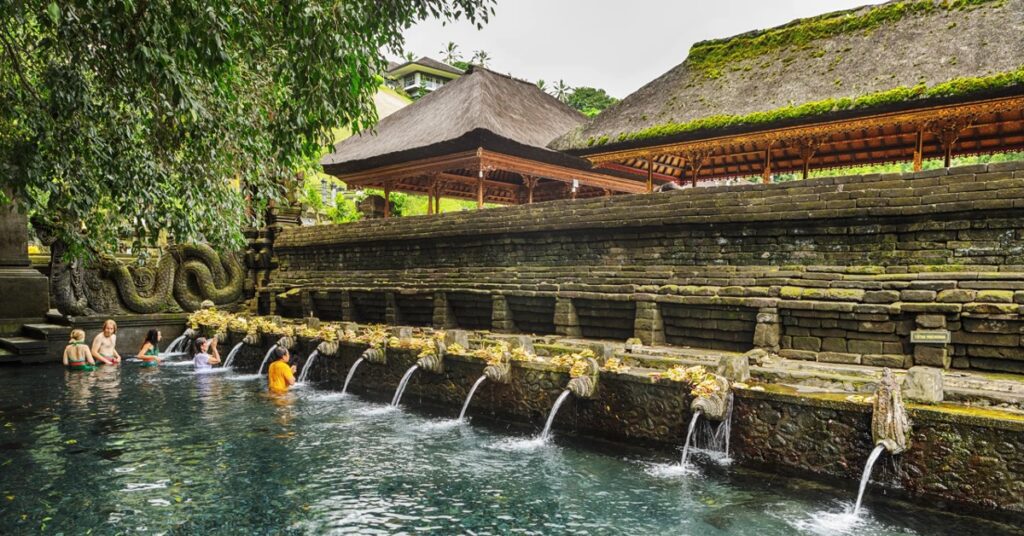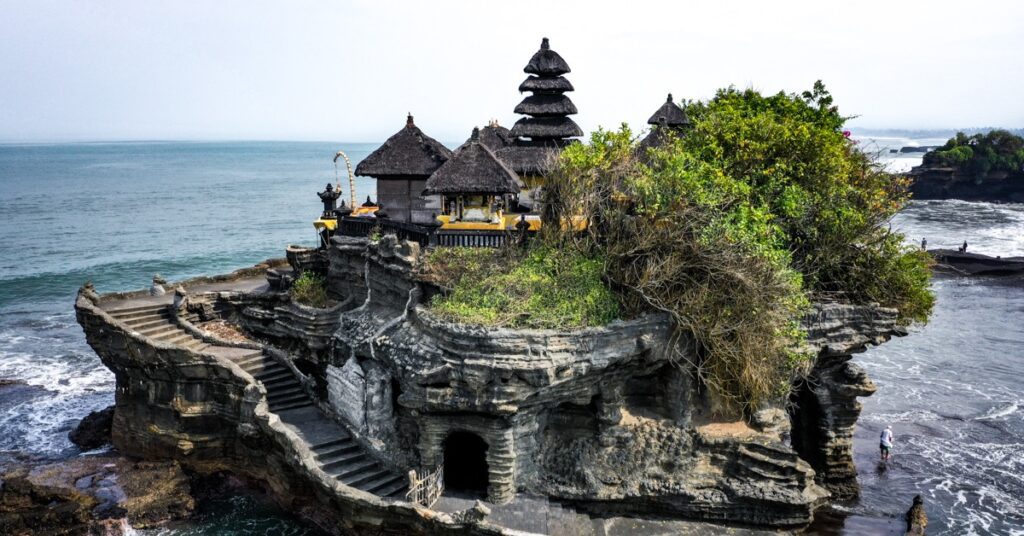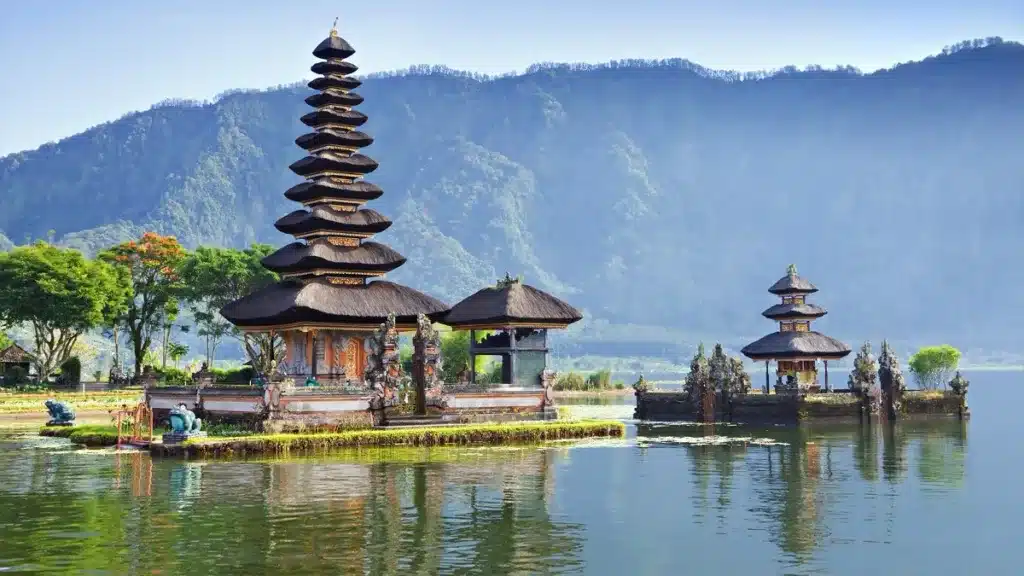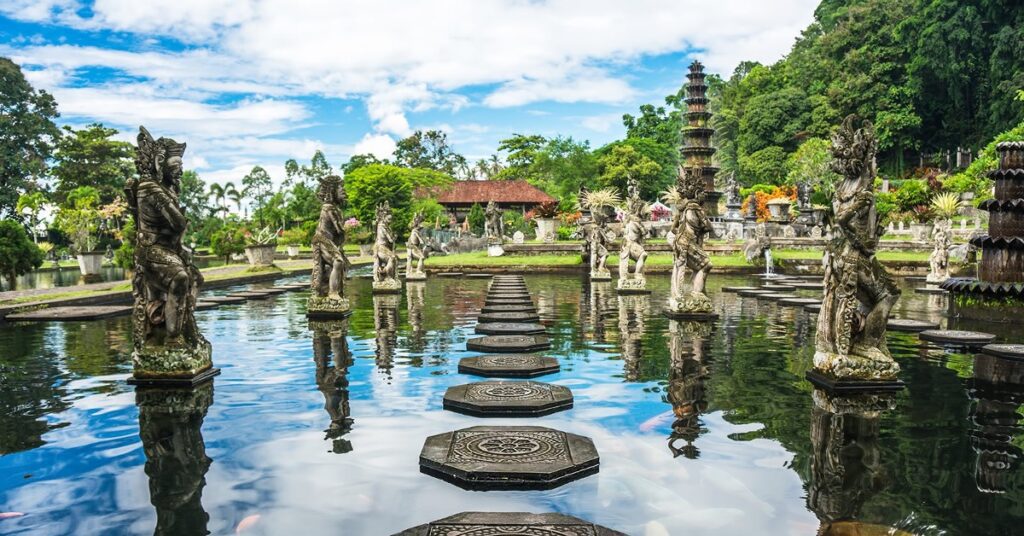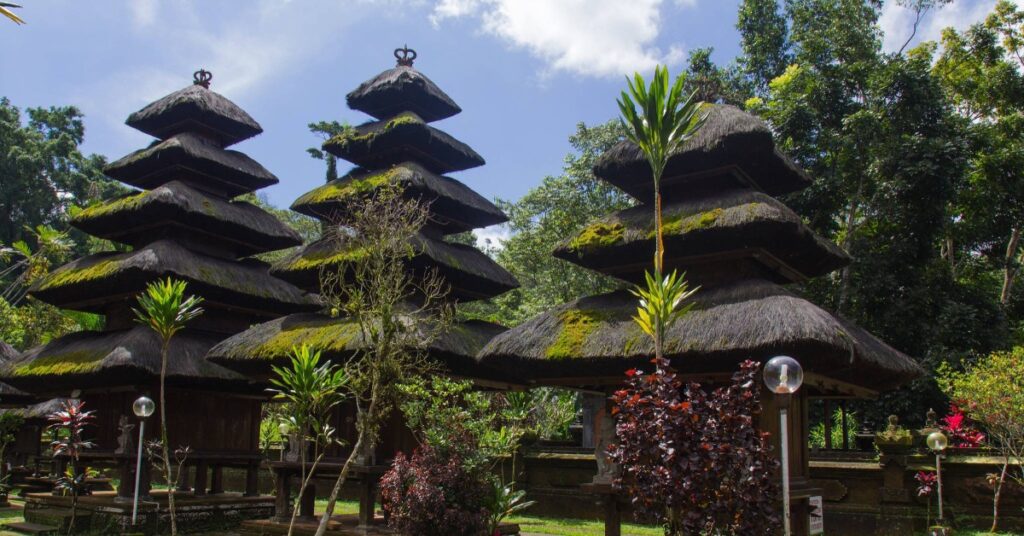Uluwatu Temple, also known as Pura Luhur Uluwatu, is one of Bali’s most famous and spiritual sites. The temple, perched on a cliff edge overlooking the Indian Ocean, gives tourists stunning vistas, a rich cultural and historical significance, and a one-of-a-kind spiritual experience.
Experience Uluwatu Temple’s Beauty
The temple is surrounded by beautiful green flora, creating a harmonious combination of nature and spirituality. The main temple is constructed on a tiny rock plateau and features beautiful stone carvings, wooden gates, and thatched roofing. The temple glows in golden light as the sun sets, providing an amazing experience.
Uluwatu Temple Activities and Amenities
At the temple, visitors can see a traditional Kecak dance performance, which is a popular Balinese dance that portrays the narrative of Rama and Sita. There are also various restaurants and souvenir shops in the region, allowing visitors to sample local culture and cuisine.
How to Get to There
Uluwatu Temple is located in southern Bali and is easily accessible by car or scooter. The drive to the temple is spectacular, with beautiful views of the coast and farmland.
When is the Best Time to Visit Uluwatu Temple?
The dry season, which lasts from April to September, is the finest time to visit the Temple. This time of year provides clear sky and ideal weather for exploring the temple and admiring the ocean vistas. It’s also great to go to the temple at sunset, when the sky turns a gorgeous orange and the temple glows in the golden light.
Things to Consider When Traveling
Visitors must wear sarongs and sashes before visiting the temple, which can be rented for a modest charge at the entry. Visitors are cautioned to be cautious because the temple is perched on a cliff edge and to avoid coming too close to the edge. The monkeys in the area are also infamous for stealing visitors’ stuff, so keep a check on your personal belongings.
History and Significance of Uluwatu Temple
Uluwatu Temple has a long and illustrious history reaching back to the 11th century. Mpu Kuturan, a respected Hindu priest who was essential in the establishment of Balinese Hinduism, erected it. The temple is dedicated to the greatest divinity of Indonesian Hinduism, Sang Hyang Widhi Wasa. According to local legend, the temple protects Bali from evil spirits that may arise from the sea.
Uluwatu Temple’s Traditional Ceremonies
Uluwatu Temple is a bustling center of worship where tourists can witness traditional Balinese ceremonies and rituals all year. The Piodalan ceremony, which takes place once a year to commemorate the temple’s anniversary, is one of the most well-known. Balinese people from all over the island assemble to Uluwatu for this ceremony to offer prayers, make offerings, and seek blessings from the gods.
Summary
Uluwatu Temple is a must-see for anyone seeking a spiritual and cultural experience in Bali. It is a one-of-a-kind and unforgettable site to visit because of the stunning vistas, rich history, and traditional dances. Given its great amenities and accessibility, Uluwatu Temple is a must-visit place for all travellers to Bali.
Tirta Empul Temple
Tanah Lot Temple
Ulun Danu Beratan Temple
Tirta Gangga Water Palace
Pura Luhur Batukau Temple
Goa Gajah Temple
Uluwatu Temple FAQs
Uluwatu Temple is uniquely perched at the edge of a cliff, offering a stunning view over the Indian Ocean. The name ‘Uluwatu’ combines two Balinese words: ‘Ulu’ meaning ‘tip’ or ‘top’, and ‘watu’ meaning ‘stone’ or ‘rock’. This temple, with archeological evidence dating back to the 10th century, is not only a historical site but also a marvel of ancient Balinese architecture and natural beauty.
Absolutely, Uluwatu Temple is a must-visit destination. It’s not just a place of breathtaking natural beauty, but also a significant cultural and spiritual site. The temple offers a genuine experience of Balinese culture, further enriched by the renowned Kecak Dance performances, making it a highly recommended visit.
The Uluwatu Temple features a 0.7-mile loop trail near Badung, Bali. Typically, it takes about 22 minutes to complete this moderately challenging hike. It’s a popular route, so expect to meet other hikers and walkers during your journey.
Uluwatu Temple is famous for its majestic location atop a cliff, overlooking the Indian Ocean. The temple’s name, derived from ‘Ulu’ (meaning ‘tip’ or ‘top’) and ‘watu’ (‘stone’ or ‘rock’), reflects its unique setting. This historic site, with archeological remains dating to the 10th century, is a testament to Bali’s rich cultural heritage.
Yes, visitors to Uluwatu Temple should dress respectfully. Both men and women are required to wear a sarong, scarf, or sash around the waist while inside the temple. These are provided for free within the temple grounds for visitors.
To fully experience Uluwatu Temple, allocate approximately 2 to 3 hours. This duration allows ample time to explore the temple, enjoy the stunning clifftop views, and experience the captivating Kecak Dance, especially during the enchanting sunset hours.
Yes, you can wear shorts to Uluwatu Temple, but ensure your attire is modest. Shirts should cover the shoulders and upper arms. Sarongs are provided free of charge for temple visits.
The entrance fee for Uluwatu Temple is IDR 30,000 (about INR 142) for adults and IDR 15,000 (around INR 71) for children. Additionally, tickets for the Kecak Dance performance, available from 4:30 PM to 5 PM, cost around IDR 100,000 (approximately INR 475).
The dress code for men at Uluwatu Temple requires wearing pants or a dress that falls below the knees and a top that covers the shoulders. This dress code is in respect of the temple’s religious significance.
Yes, you can wear slippers to Uluwatu Temple. However, remember to remove your shoes or slippers before entering any temple in Bali, as is customary.
Yes, toilets are available for visitors at Uluwatu Temple. The temple is open to tourists from 07:00 to 19:00, with facilities located outside the temple area.
Yes, Uluwatu Temple is home to some playful monkeys. While they are generally harmless, visitors should still be cautious with their belongings.
It is advised not to enter the temple during menstruation. In Balinese culture, menstrual blood is considered impure and entering a temple during this period is believed to desecrate the sacred space.
Avoid wearing tops that don’t cover the upper body properly, such as tank tops or singlets. If you forget to bring a sarong and scarf, you can borrow them at the entrance ticket counter.
Uluwatu Temple, standing on a cliff 70 meters above the Indian Ocean, is dedicated to Lord Shiva as Rudra. The temple’s name, derived from ‘Ulu’ (meaning ‘tip’) and ‘watu’ (meaning ‘rock’), signifies its location. It honours the Balinese belief in the trinity of Brahma, Vishnu, and Shiva as a single entity.
The Kecak Fire Dance show at Uluwatu Temple starts at sunset, usually around 6 PM.
Uluwatu Temple’s history is linked to the 16th-century journey of Dang Hyang Dwijendra. He contributed to the temple’s development, including the Dalem Jurit Temple in the Jaba Pura (outer area of the temple), enhancing its cultural and historical significance.
A seasoned traveller and Bali enthusiast with a wealth of experience and knowledge about the island. With a passion for exploring and discovering Bali’s hidden gems, Ben has a keen eye for details and a deep understanding of Bali’s culture, history, and unique features. With years of travel experience under his belt, he has explored almost every corner of the island and can provide invaluable insights and recommendations to make your trip unforgettable. From the best beaches to the tastiest local cuisine,he’s has got you covered.

